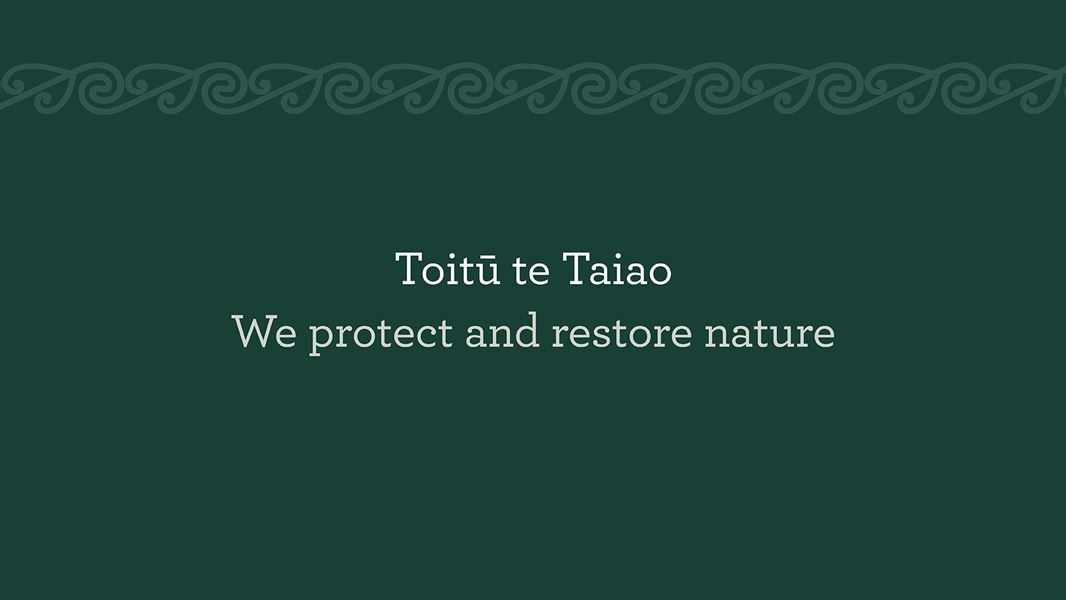Our vision
Nature is thriving in Aotearoa | Te Oranga o te Ao Tūroa
Our purpose
We protect and restore nature | Toitū te Taiao
Our outcomes
Ecosystems and species across Aotearoa are thriving from mountains to sea
- Improved condition of threatened species and a representative range of ecosystems.
- DOC leads and enables others to have the greatest impact for biodiversity.
- We attract investment into conservation.
Public conservation lands and waters are maintained and improved for future generations
- Improved condition of threatened species and a representative range of ecosystems.
- Our land and water management and obligations are met.
- Important cultural and historic sites are protected.
We are an honourable Treaty partner
- Active protection of Māori rights and interests, and active participation of treaty partners.
- Increased capability and capacity.
- Partnerships and relationships are strengthened.
Connection with nature and cultural heritage enriches people’s lives
- Visitors enjoy a sustainable number of experiences.
- People and communities value and take action to preserve nature and cultural heritage.
DOC is a great organisation to work for and with
- Improved performance of the conservation regulatory system.
- Our people are engaged and see the contribution that they are making.
- DOC is financially sustainable and known to be effective.
Download our strategy - We protect and restore nature (PDF, 202K)
